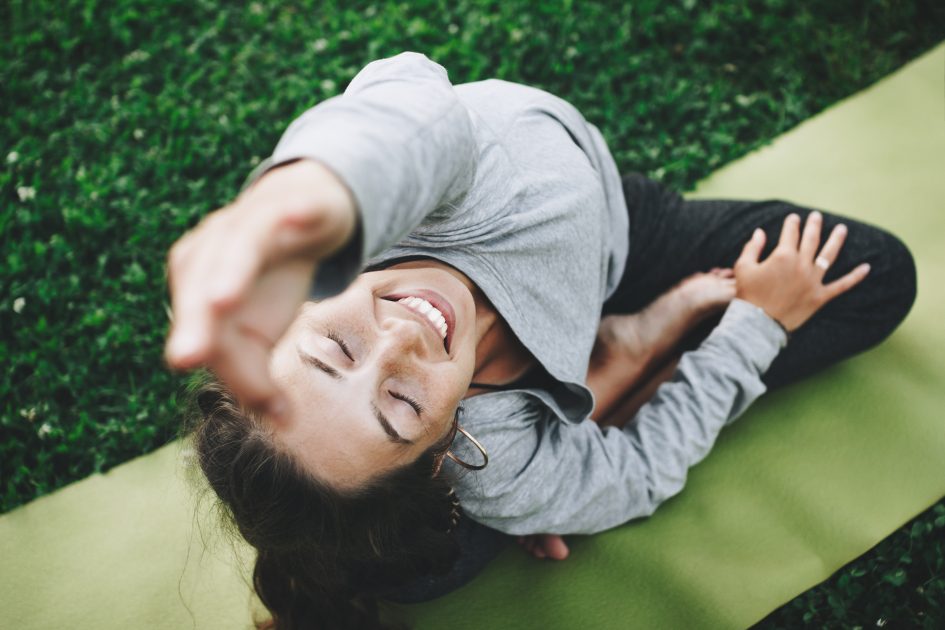More Than a Stretch
Contrary to common belief that yoga is strictly gentle and relaxing, the ancient practice can in fact support heart health – and some forms can downright get your heart rate going and induce a good sweat! Read on to see how to incorporate yoga as a heart-healthy practice.
Even though yoga isn’t classified as an aerobic activity, it can provide many benefits for your cardiovascular system:
- Forms like vinyasa, bikram or power yoga can get your heart rate going and sweat dripping.
- On the flip side, practicing forms like slow-flow or restorative yoga can help lower your heart rate and blood pressure.
- All forms of yoga are centered on connecting your movement with your breathing, which plays a monumental role in overall cardiovascular health.
Sphinx Pose
Try the heart-opener sphinx yoga pose:
- Lying on your stomach with your legs behind you, point and reach your toes further behind you.
- Position your elbows directly under your shoulders with your forearms and hands flat on the floor, parallel to one another.
- Inhaling, lift your chest and head up, without lifting your elbows off the floor.
- Hold the sphinx pose for five breaths, then lower your torso back down.
Bridge Pose 
• Lying on your back, bend your knees and place your feet flat on the floor as close to your buttocks as possible.
• Exhale and press through your feet to lift your tailbone up, keeping your thighs parallel. Try to create a plane or straight line from your knees to your chin.
• Lift your chin slightly up and gently pull your shoulder blades toward the floor.
• Hold your hands together or keep them flat on the floor.
• Hold the bridge pose for five breaths, then exhale and roll your spine back toward the floor.
Wild Thing 
- Begin with your hands and knees on the mat.
- Lift your buttocks up, walking your feet toward your hands – into the downward-facing dog pose.
- Shifting your weight onto your right hand, roll your right foot into a side-plank pose with the outer foot on its side on the floor.
- Lift your hips and step your left foot back, placing your toes on the floor behind you with your knee slightly bent.
- Round your shoulder blades back while reaching your left arm up and behind you.
- At the same time, move your head and direct your gaze behind you – your head will be upside-down and almost parallel to the floor (if comfortable).
- Hold the wild thing pose for five breaths, then return to downward-facing dog pose.
- Repeat on your left side.
Sources:
“The Women’s Health Big Book of Yoga,” Kathryn Budig, published in 2012.
“Sphinx Pose,” Yoga Journal, yogajournal.com, Aug. 28, 2007.
“Wild Thing Pose,” Yoga Journal, yogajournal.com, Aug. 31, 2009.
“Bridge Pose,” Yoga Journal, yogajournal.com, Aug. 28, 2007.


